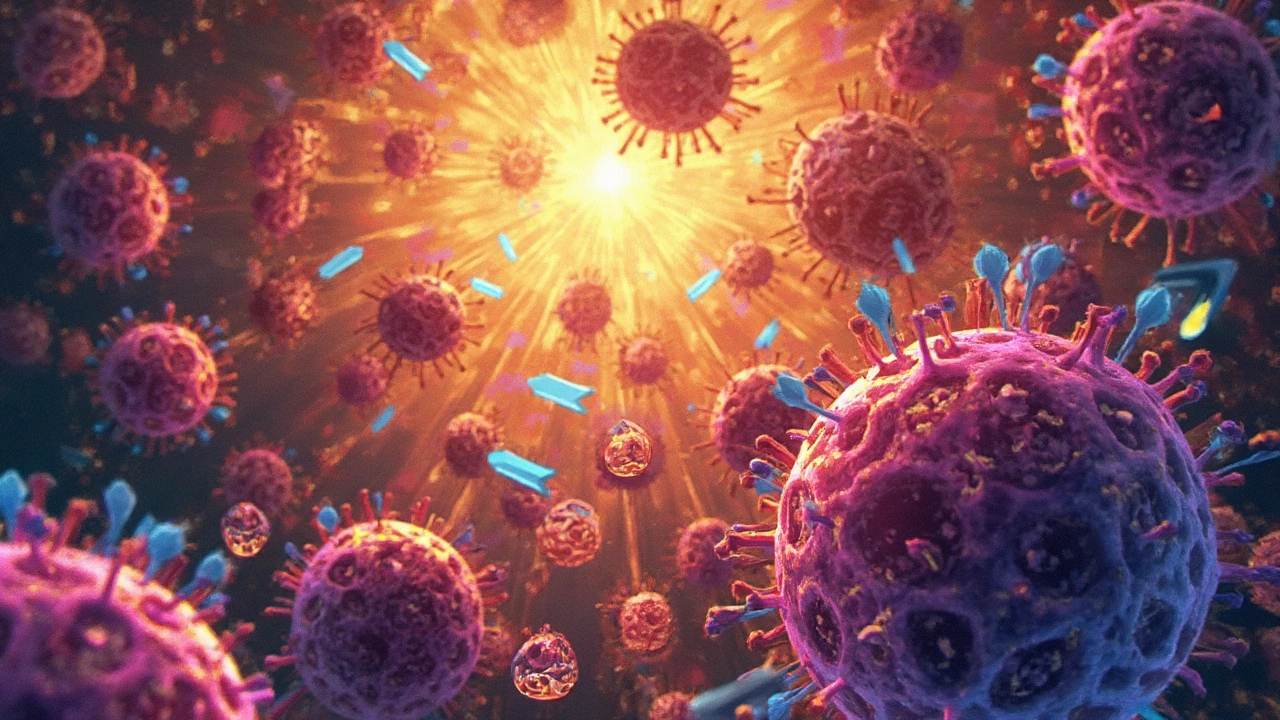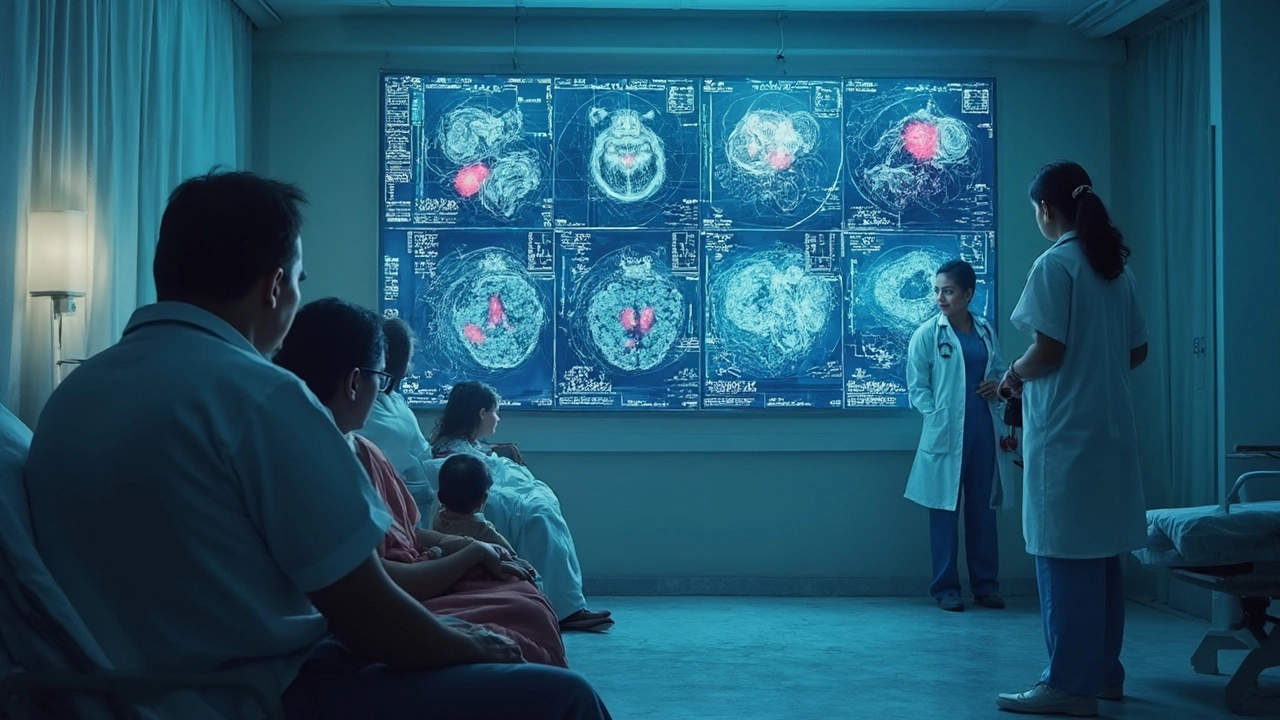If someone told you all cancers are equally tough to treat, they're way off. Some types are a lot more stubborn than others, and doctors still lose sleep over a few of them. If you’re curious which cancer is the hardest to cure, there’s one name that turns up again and again: pancreatic cancer. It’s not alone, though—some brain cancers and a few others definitely make the list.
People wonder why treatment works for some cancers but barely moves the needle on others. It usually comes down to where the cancer grows, how fast it spreads, and—no kidding—how well it hides from doctors. Methods that zap one kind can barely touch another. Plus, by the time symptoms pop up, these hard-to-cure cancers are often already way out of hand. That’s why knowing the warning signs and staying on top of your health checks might literally save your life.
Pancreatic cancer is a prime example. Most people don’t even notice something’s wrong until it’s everywhere, making surgery or chemo a long shot. For a real shocker: survival rates for advanced pancreatic cancer can be under 10%, way lower than for many other cancers. On top of that, these cancers can resist treatments that work on others—like immune therapy or targeted drugs.
- Why Some Cancers Are Tougher Than Others
- Spotlight: Pancreatic and Other Aggressive Cancers
- Latest Advances and Survival Odds
- Practical Tips and Hopeful Signs
Why Some Cancers Are Tougher Than Others
Ever wonder why some cancers are basically stubborn roadblocks while others are easier for doctors to treat? It’s not just bad luck. It’s about the biology behind each kind. For example, pancreatic cancer is notoriously sneaky—by the time symptoms show up, the cancer is often already advanced or has spread to other organs.
Location matters a lot. Tumors deep inside the body, like those in the pancreas or brain, are hard to spot early with regular scans. This means fewer chances to catch them while they're still small and easier to remove. Compare that to something like skin cancer—you see it, get it checked fast, and treatments work better.
Some cancers, like pancreatic cancer or certain brain tumors, are built to resist the strongest treatments. They can dodge cancer treatment drugs by changing quickly, or they hide behind a wall of normal cells, making it tough for chemo and radiation to reach them.
Another frustrating factor? The mutation speed. Some aggressive cancers change their "look" so often that even top-notch new drugs stop working sooner than you’d expect. Plus, the body’s own immune system sometimes fails to recognize or attack these sneaky cancer cells, making things worse.
Take a look at this data showing how tough some of these cancers really are:
| Cancer Type | 5-Year Survival Rate (Approx.) | Why So Tough? |
|---|---|---|
| Pancreatic | 12% | Hard to detect, fast spread, treatment resistance |
| Glioblastoma (brain cancer) | 7% | Protected by blood-brain barrier, quick to return |
| Liver | 20% | Usually diagnosed late, limited liver function |
| Lung (advanced) | 18% | Often spread by discovery, tough environment |
The truth is, cancers that stay hidden, adapt quickly, and resist common treatments leave doctors with fewer weapons. That’s why keeping up with regular checks, knowing your family history, and not ignoring weird symptoms can be real game changers.
Spotlight: Pancreatic and Other Aggressive Cancers
If you ask any cancer specialist about the hardest cancer to cure, pancreatic cancer almost always comes up first. Here’s why: it tends to grow quietly, without symptoms, until it’s advanced. Doctors call it a “silent” cancer. By the time people notice yellowing of the skin, belly pain, or sudden weight loss, it’s usually bad news—nearly 80% of cases have already spread too far for surgery, which offers the best shot at a cure.
To give you an idea of just how tough pancreatic cancer is, check out this data:
| Cancer Type | 5-Year Survival Rate |
|---|---|
| Pancreatic | 12% |
| Lung | 26% |
| Breast | 91% |
| Prostate | 97% |
This table is straight from the American Cancer Society’s 2024 stats, and it really hits home how serious pancreatic cancer is. Those numbers don’t lie—it’s way behind other common cancers when it comes to long-term survival.
Pancreatic cancer isn’t the only villain. Glioblastoma, a type of brain tumor, is another heavy hitter. Even with surgery, radiation, and chemo, surviving more than two years is very rare. A few other tough players:
- Liver cancer: Most cases are found late, and the cancer cells quickly resist chemo.
- Esophageal cancer: This one often hides behind common acid reflux symptoms until it’s too late.
- Ovarian cancer: Caught early, it’s treatable, but most cases show up at stage 3 or higher.
So what makes them so aggressive? Location is a huge factor. The pancreas, for example, sits deep in the gut, surrounded by other organs. By the time a lump is big enough to notice, it’s already broken out. The same goes for brain tumors—removing them is risky, and they spread through vital tissue super fast.
Bottom line: these aggressive cancers are tough because they grow fast, hide well, and don’t respond to most standard treatments. That’s why researchers keep working overtime for better early detection and smarter therapies.

Latest Advances and Survival Odds
If you’re reading about hardest cancer to cure, you’re probably hungry for some good news. There’s real movement happening in cancer research, even for stubborn cancers like pancreatic. A lot of teams worldwide are racing to crack the code with new treatments. The truth? Survival odds are still low for some aggressive cancers, but they’re not stuck—they are inching up.
Doctors are now using more “personalized medicine.” This means looking at your cancer’s DNA to find weak spots that might respond to certain drugs. In the pancreatic cancer world, a drug combo called FOLFIRINOX sometimes gives extra months for people with advanced cases. Immunotherapy, which uses your own immune system to attack cancer, is another hot area. It works best with cancers like melanoma or lung, but clinical trials are hunting for ways to make it hit harder against pancreatic.
There’s also talk about liquid biopsies. Instead of slicing out a piece of tumor, doctors check for cancer DNA floating in your blood. It’s early days, but these tests could help catch things sooner—a huge deal since earlier treatment almost always means better odds.
| Cancer Type | Five-Year Survival Rate |
|---|---|
| Pancreatic | ~12% |
| Glioblastoma (brain) | ~7% |
| Lung (non-small cell, advanced) | ~7-18% |
| Melanoma (advanced) | ~35% |
Researchers are also working hard on early screening. For folks with a family history or genetic risks (like BRCA mutations), some clinics now run extra checks. It’s worth asking your doctor if you qualify for any of these programs.
So, while survival odds for tough cancers like pancreatic or aggressive brain cancers are still painfully low, the numbers are slowly going in the right direction. Every new discovery means more time with loved ones and better odds for those getting diagnosed each year.
Practical Tips and Hopeful Signs
So, is there anything a regular person can do about hardest cancer to cure types like pancreatic or certain brain cancers? The answer is yes, actually. While you can’t change all the risks—like your age or your genes—there are some legit steps to nudge those odds in your favor. And, science keeps making progress that’s actually worth talking about.
First, the basics matter a lot. Staying at a healthy weight, not smoking, getting moving most days, and eating foods with plenty of fiber actually lower your risk for several tough cancers. These habits also make your whole body stronger if you ever end up facing treatment. If you’ve got a family history, don’t just shrug it off—let your doctor know so you can get on the right screening track sooner. That goes double for anyone with ongoing stomach or digestive problems that don’t get better.
Catching anything early really does change everything. For pancreatic cancer, there’s no gold-standard screening like the mammogram for breast cancer yet. But if you’re high risk—maybe from strong family history or carrying the BRCA gene—there are some early tests your doctor can order. Trust your gut if something feels weird—especially new belly pain, rapid weight loss, yellowish skin or eyes, or weird changes in your stool. Don’t wait hoping it’ll just pass.
On the hopeful side, doctors are testing new ways to tackle these really tough cancers. Immunotherapy (where your own immune system attacks cancer) is starting to help a few people. And some researchers are actually using AI to spot early signs on scans that humans might miss. Clinical trials for aggressive cancers can be a real shot at survival, and more hospitals now help patients find and join these studies.
| Cancer Type | 5-year Survival Rate (Advanced Stage) | Recent Advances |
|---|---|---|
| Pancreatic | ~9% | Genetic testing, targeted therapies, clinical trials |
| Glioblastoma (Brain) | ~6% | Precision radiation, experimental vaccines |
| Esophageal | ~5% | Better imaging, new chemo drugs |
Here’s what helps most with the hardest cancer to cure cases:
- Know your family history—bring it up at appointments.
- Don’t ignore new or unexplained symptoms that don’t go away.
- If you’re diagnosed, ask about getting a second opinion.
- Check if you’re eligible for any clinical trials—sometimes these are the best hope for stubborn cancers.
- Lean on your friends, a counselor, or a support group. Mental health is huge in fighting any cancer.
The bottom line? While survival odds are still grim for some aggressive cancers, they’re not set in stone. Improvements are real, and more people beat the odds every single year. Stay informed, stay alert to your body, and speak up early if something doesn’t feel right.
